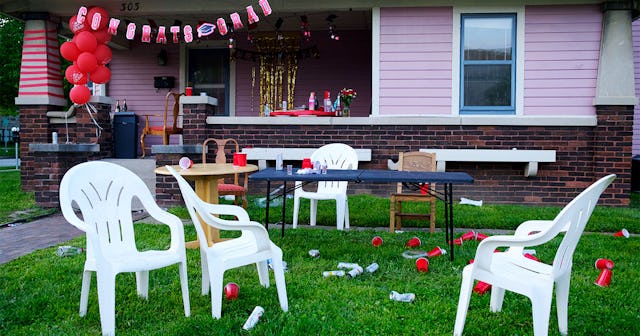COVID Outbreaks Are Being Traced Back To Parties -- Not Protests

Clusters have been linked to several university bars and other large social gatherings
As worldwide coronavirus cases tops ten million and the death toll in the U.S. surpasses 128,000, health officials in states that have reopened are seeing surges traced to public gatherings in bars, restaurants, strip clubs, churches, and beaches but not from the nation-wide protests occurring calling for an end to systemic racism and police brutality.
Coronavirus clusters — defined as multiple people contracting COVID-19 at the same event or location — have been increasing at alarming rates in recent weeks. Many infectious disease experts warned that protests may lead to additional outbreaks, but are now finding that’s not the case.
“We did have a rally in Bellingham, which is our county seat, and there was also a protest, and we have not been able to connect a single case to that rally or to the protest, and what we’re finding is in large part that’s due to the use of masks,” Erika Lautenbach, director of the Whatcom County Health Department in Washington State, told NPR’s All Things Considered. “Almost everyone at the rally was wearing a mask, and it’s really a testament to how effective masks are in preventing the spread of this disease.”
In Minnesota, where protests are still ongoing over the death of George Floyd at the hands of a white police officer, state officials have yet to see a marked rise in coronavirus cases as a result of those protests. The results are “very encouraging,” a health official told ABC News. The official attributed the low infection rate to “the fact that many or most protesters were wearing masks, the events were outside, people were often able to maintain a 6-foot distance, and any exposures were of relatively shorter duration, not several hours to the same people in the same place.”
Where state officials are seeing clusters pop up when contact tracing is after crowds of people gather — especially indoors. For instance, Lautenbachit found that 29 cases were traced back to a party in Washington State of 100 to 150 people in early June. Harper’s Restaurant & Brewpub, located outside of Michigan State University, has had 85 cases traced back from people who visited between June 12 and 20. Others who visited have been asked to self-quarantine for two weeks.
In Baton Rouge, La., at least 100 people tested positive for the virus after visiting bars in the Tigerland nightlife district, near Louisiana State University, the New York Times reported. At a Christian summer camp near Colorado Springs, at least 11 employees tested positive as they worked on getting the camp open. It had to promptly cancel overnight stays for the first time in 63 years.
In Florida, Texas, and Arizona, sharp increases in cases are happening among people under 40. Experts are blaming this on “second wave behavior” according to The Guardian, meaning they’ve let their guard down in public. While they may fare better than those who are elderly or have pre-existing conditions, they are continuing to spread the virus to those very people.
Information about COVID-19 is rapidly changing, and Scary Mommy is committed to providing the most recent data in our coverage. With news being updated so frequently, some of the information in this story may have changed after publication. For this reason, we are encouraging readers to use online resources from local public health departments, the Centers for Disease Control, and the World Health Organization to remain as informed as possible.
This article was originally published on